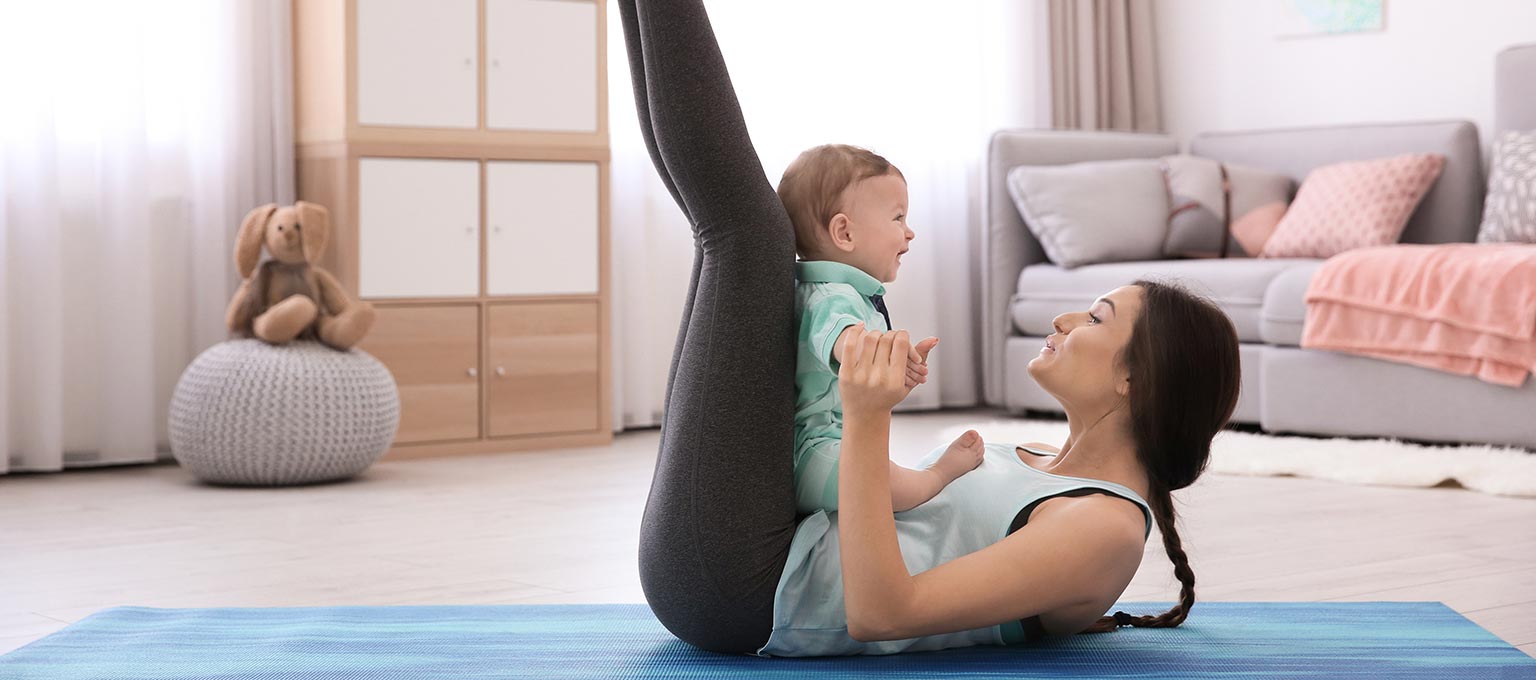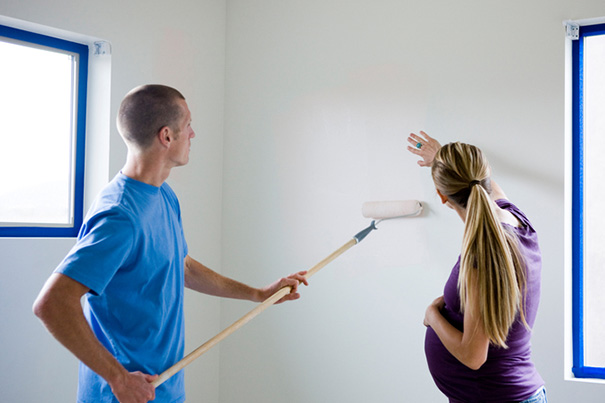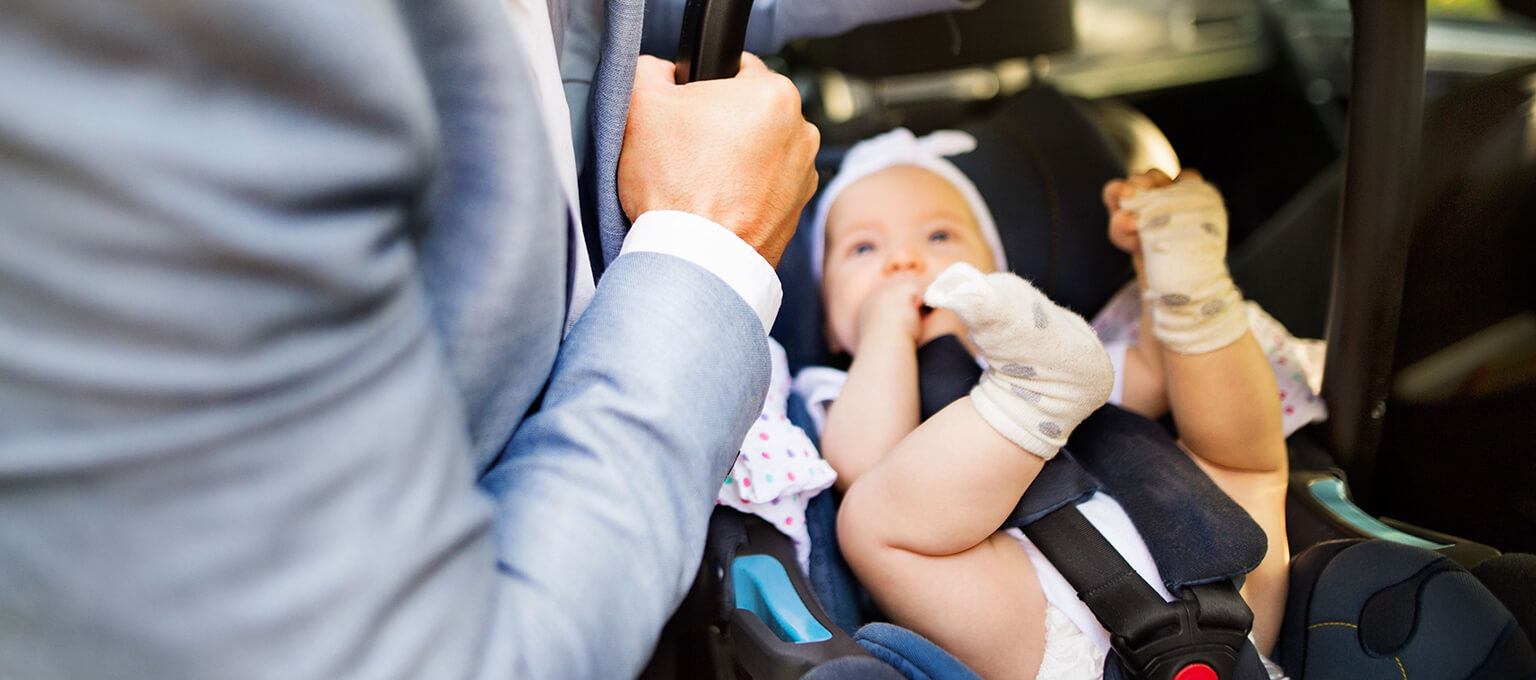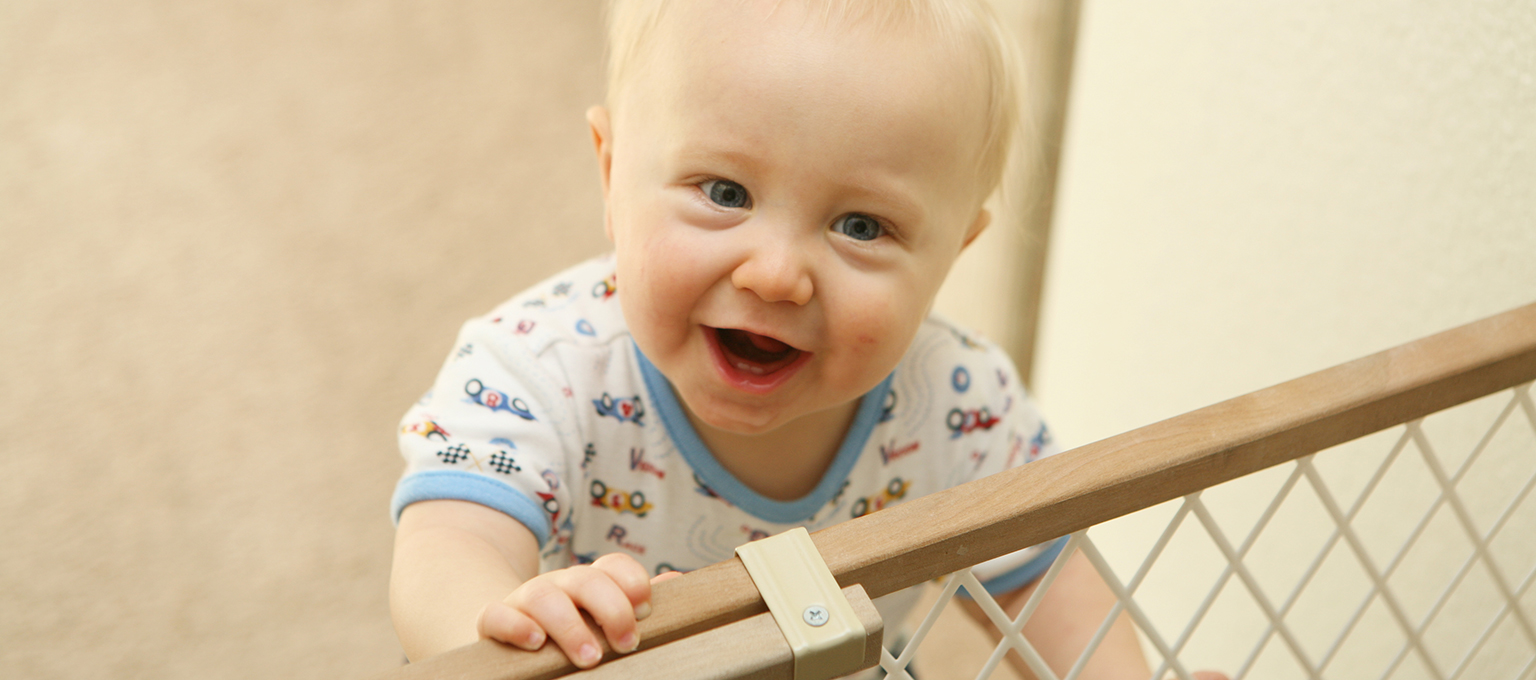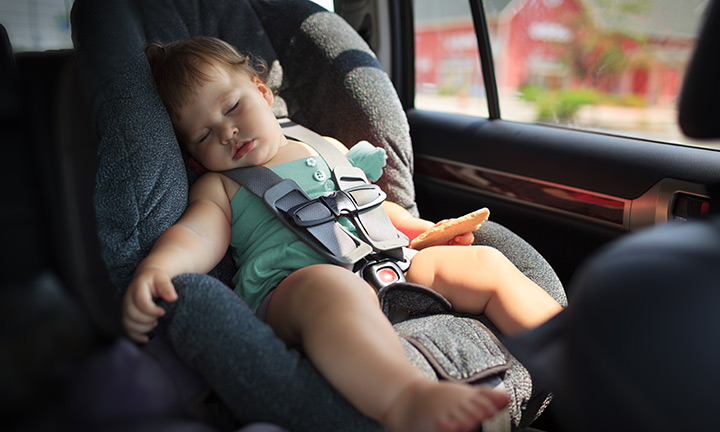
How to Hold a Baby
Throughout your pregnancy, you might've dreamed about holding your baby for the first time. Now that your little one has arrived, you may be curious about how to hold a baby in a way that keeps them safe and secure.
There are various ways to hold a newborn depending on the situation. For example, how you hold your baby when picking them up from the crib, bottle- or breastfeeding, bathing, burping, or comforting will need to be slightly different.
Read on to find out how to hold a baby safely and comfortably each time.
How to Properly Hold a Newborn Baby
All new parents feel a bit nervous when it comes to holding a newborn baby for the first time—that's totally normal. There are a few things to keep in mind when holding your baby, and we'll break them down for you depending on the situation. The most important step when carrying a baby or holding your newborn is to support their head and neck. Your baby won't develop head control until they're about 4 months old, so it's your job to ensure that their head doesn't flop from side to side or snap from front to back.
Picking Up Your Baby
Before picking up your baby from their crib, it's important to know how to hold a newborn. Be sure to support their head and neck, taking extra care around the fontanelles (the soft spots).
When picking up your baby, slide one hand under their head and neck, and place your other hand under their bottom. Bend your knees so you don't strain your back.
Now that you have a good grip on your baby, scoop them up and bring them close to your chest while you straighten out your legs.
Most cribs have an adjustable mattress height, which means you don't have to bend over quite so much during the newborn phase. As your baby grows and becomes more mobile, you'll need to lower the mattress to ensure they can't climb out.
Lying Position Hold
To hold a baby in a lying position, cradle their head with one hand while resting their head against your chest.
Use your other arm to support their neck while placing their head in the crook of your elbow. Support their bottom with your other hand.
This position is great for making eye contact with your baby and smiling and talking to them, which can aid in their development and enhance their emotional security. Interacting with your baby like this can also help with bonding.
Upright Position Hold
To hold your baby in an upright position, support their head and neck with one hand while resting them on your chest and shoulder. Support your baby's bottom with your other hand.
In Summary
Whether your pick up, carry, or hold your baby, the most important thing is to support his head and neck. You can try two different holds with your baby: the lying position and the upright position. The lying position is perfect for making eye contact with your baby, talking to him, and bonding.
How to Hold Your Baby During Skin-to-Skin Contact
Skin-to-skin contact, also known as kangaroo care, is a bonding practice you can begin right after your baby is born (and continue throughout infancy). Skin-to-skin contact involves placing your nearly naked baby (except for perhaps a diaper and a beanie) on your bare chest with their chest touching yours. Drape a blanket or a gown over your baby's back to keep them warm. Skin-to-skin contact not only helps you and your little one bond but also helps regulate your baby's temperature, breathing, and heartbeat. For new parents, the benefits of skin-to-skin contact can include feeling more confident as a parent. And nursing parents may experience an increase in breast milk supply.
In Summary
Skin-to-skin contact may be the first time you or your partner get to hold your newborn . It involves placing your nearly naked baby on your bare chest so that the two of you can start to bond. It may also help regulate your baby's temperature, among other important factors. Continue skin-to-skin contact throughout your baby's infancy.
How to Hold a Baby With Colic
Colic is when an otherwise healthy baby cries inconsolably for more than three hours, more than three days a week, for three weeks or more.
It can be tough to know what to do if your baby has colic, especially when nothing seems to work. So, how can you hold your baby when they have colic? One method you can try is holding them close to your body while taking slow and calm breaths. This may help soothe them.
Rocking your baby in your arms may also help, as can holding them close to you in a baby carrier. Read more about how to soothe and treat a colicky baby here.
In Summary
When your baby is colicky, it may seem like nothing can comfort them. Try holding them close to your body while taking slow, calm breaths, which can have a soothing effect. Also try using a baby carrier or rocking them.
How to Hold a Baby While Bottle-Feeding
When bottle-feeding, whether it's with formula or breast milk, here's how to hold your baby: cradle your baby in a semi-upright position (to help with swallowing) while supporting their head in the crook of your elbow and their body along your inner forearm.
Avoid feeding your baby when they're lying completely flat, as this can create a choking risk. Also, don't let them fall asleep with a bottle, which can lead to ear infections and tooth decay.
When bottle-feeding your little one, it may be most comfortable for you to sit in an armchair or glider, or to use pillows to help prop up your arms.
In Summary
When bottle-feeding your baby, you'll want to have them in a semi-upright position so that it's easier for them to swallow and there's less risk of choking or liquid going into their ears. Sit in a comfortable armchair or glider to feed your baby so that your arms are supported.
How to Hold Your Baby While Breastfeeding
Here are four breastfeeding positions you can try with your little one when you're learning how to hold a baby during feeding:
Get the full list of recommended breastfeeding tips.
In Summary
There are four common positions you can use when breastfeeding your baby: the cradle hold, cross-cradle hold, football hold, and side-lying position. Feel free to try all of them and settle on what works best for you and your baby.
How to Hold a Baby When Burping
Here are three different ways how to hold a newborn for a burping session (use the one that’s most successful with your baby):
In Summary
There are three different ways you can hold your baby for burping after a feeding. One is an upright position, another is a seated position, and the third is a tummy-lying position. See which one works best for your baby.
How to Hold a Baby When Bathing
When bathing your baby, here's how to hold a newborn: make sure to support their head with one hand while you use your other hand to guide them into the baby bathtub.
Keep most of their body and face above the water, and always keep a hand on them. Don't leave your baby unattended for even a second.
Use your free hand to gently wash your baby’s body with warm water.
In Summary
When bathing your baby in a baby bathtub, always support their head and neck, and keep most of their body above the level of the water. Don't leave your baby unattended. Use your free hand to bathe them.
How to Hold a Baby When Feeding With Solid Foods
Make sure your baby is sitting upright when you feed them solid foods. This helps minimize the risk of choking, and it will also help prepare them for joining the family at the table when the time comes.
Support your baby in your lap or place them upright in an infant seat. You can also use a high chair beginning at around 6 months of age if they are able to sit well.
In Summary
When feeding your baby solid foods for the first time, be sure that they're sitting upright in your lap, with support, to minimize the possibility of choking. You may also try sitting them in an infant seat or in a high chair when they're around 6 months old.
How Not to Hold and Handle a Newborn Baby
When holding your little one, focus on your baby and avoid trying to multitask, being especially careful not to do anything that could be potentially dangerous. For example, never handle hot drinks or cook while holding your baby.
By focusing on your baby and holding them securely, you also minimize the risk of tripping or accidentally dropping your baby.
Never shake your baby. If your little one is crying and you're feeling frustrated, place them on their back in their crib, and take some time out in another room for a few minutes. Re-enter the room when you're feeling calm and ready.
When it comes to friends and family holding your baby, make sure not to hand them your baby while they’re standing. The safest thing to do is ask them to sit down, and then gently place your baby in their arms, ready for cradling. Some other important tips to keep in mind:
In Summary
Whenever you hold or carry your baby, focus on them so you don't accidentally trip or drop them. Avoid doing other activities that could be hazardous, like cooking or carrying a hot liquid. Also, make sure that any family and friends who hold your baby support their head and neck. Don't ever shake your baby, as this can endanger their life.
Safety Tips for You as You Hold Your Baby
As you master holding your baby the right way, it's also important to pay attention to how you carry yourself while holding them. The weight of your baby can increase your risk of injury or muscle imbalances, which can lead to pain.
To avoid injury, aim to carry your baby close to and centered on your body. Avoid carrying your baby on your hip as this can cause shoulder, hip, and spine problems.
To properly carry and lift your baby, keep your:
When picking your baby up from a lower spot like the crib or play mat:
In Summary
When picking up your baby, it's important to pay attention to how you carry yourself so you don't injure your back. Always keep your spine straight, shoulders back, and engage your abs. Bend your knees if you're picking up your baby from a low position. And, to avoid hip issues, carry your baby centered on your body, not on your hip.
FAQS AT A GLANCE
To hold a newborn and carry them upright, support their head and neck with one hand while resting them on your chest and shoulder. Hold your baby's bottom with your other hand.
The Bottom Line
Holding your baby isn't rocket science; however, there are some important guidelines to follow. The most important is always to support their head and neck and to keep your focus on them, avoiding distractions or multitasking with anything that could be dangerous.
Whether you're feeding your baby, burping them, or practicing skin-to-skin contact, the simple holds we've described help ensure both of you are comfortable and safe.
Holding your baby is a wonderful thing—these are the moments that will bond the two of you for a lifetime. Enjoy the cuddles!
- AAP
- Mayo baby book
- raisingchildren.net: How to hold a newborn: in pictures
- Kids Health: A Guide for First-Time Parents
- Healthy Children: Bottle Feeding Basics
- CDC: Feeding From a Bottle
- Stanford Children’s Health: The Growing Child: Newborn
- Cleveland Clinic: Kangaroo Care
- Cleveland Clinic: Kangaroo Care
- Mayo Clinic: Slide show: Breast-feeding positions
- Healthy Children: Bathing Your Baby
- Kids Health: Feeding Your 4- to 7-Month-Old
Read more about Baby
Related Articles
Join a World of Support
through Pregnancy and Parenthood.
TRACK WITH TOOLS
LEARN WITH EXPERTS
GET REWARDED
